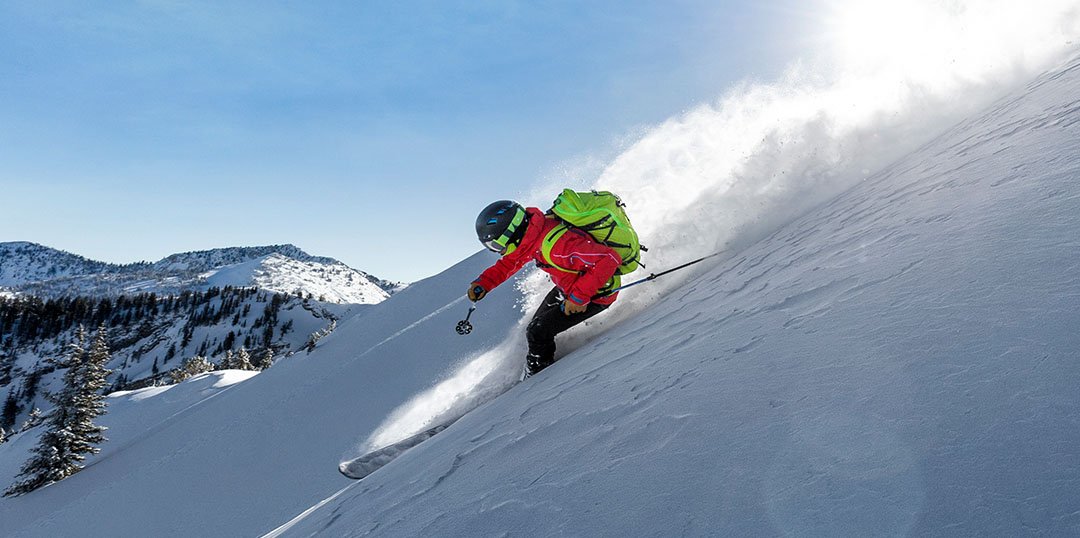Winter Sports Activity Tips and Tricks for Outdoors

January 7, 2021
For those of us who love winter sports, the first snow is an event to be celebrated. It’s the unofficial start of our year and the activities we love – skiing, snowboarding, the backcountry, being active, experiencing nature — all while spending time outside with friends and family. And this year, likely more than any other, getting outside is critical to our well-being.
As people pursue their passions throughout the year, Garmin wearables are there every step of the way. Oftentimes, people relate to Garmin products through their singular passion, but there are a lot of “under the hood” features in Garmin’s watches. With countless activities and functions in these wearables, it’s easy to miss some of the features that can help you.
Today, we’ll touch on a few of those features to keep in mind as you head out for the mountains over the holidays and into the 2021 winter sports season.
Skiing and Snowboarding
Using the Ski or Snowboard activity on your fēnix or Instinct, users can see the distance traveled, time and the total elevation descent, as well as max and average speed. Your device will record the details of each downhill skiing or snowboarding run using the auto run feature, which automatically records new ski/snowboard runs based on your movement. On the ride up, your device will pause the timer during chairlift rides. As soon as you start moving downhill, the timer will restart.
Compatible Devices: fēnix 5, fēnix 5 Plus, fēnix 6, fēnix 6 Solar Series, Forerunner 645/645 music/745/935/945, Venu, Instinct, Instinct Solar Series, MARQ, tactix Delta Series, tactix Charlie Series, Descent Mk2 Series, Descent Mk1, quatix 5, quatix 6
Preloaded Ski Resorts
fēnix users will celebrate knowing that there are over 2,000 preloaded ski resort maps native to their devices. These resort maps allow for improved situational awareness when viewing the map data page while skiing and snowboarding. In addition, the maps are optimized to show run names with difficulty – viewable at a glance for each run.
Compatible Products: fēnix 6 Pro Series, fēnix Sapphire Series, MARQ Series, and tactix Delta Series, Descent Mk2 Series, and quatix 6 Series
Additional Info: List of Worldwide Ski Resorts
Garmin Pay
A profound reality of 2020 is heightened awareness any time we touch a communal object. Credit card terminals are one of these high-volume communal objects. We all know money is dirty, but what about credit terminals? As it turns out, coronavirus can live on these credit card terminals. Unlike cash, which exchanges hands and typically goes into a wallet or purse for a period of time, a credit card terminal is in constant use and can be used dozens of times (if not more) an hour. With limited resort access and more people wanting to get out skiing/snowboarding, the contact rate could be much higher.
Garmin Pay helps you avoid contact with high-traffic surfaces by using contactless payment. Just tap your watch near a credit card terminal to pay and head back to the slopes.
Compatible Devices
How to Set Up Garmin Pay
XC (Cross-Country) Ski and Ski Power
When using the XC ski functionality, you see distance and elevation change. What’s unique is the additional data provided with a Heart Rate Monitor (HRM) Pro (purchased separately). When used in conjunction with a fēnix 6 Series, Forerunner 945, or Venu, XC Ski Dynamics provides a power metric as a data field option – in short, it shows just how much power you are creating within your ski workout. Additionally, you can save your power readout for the activity and review it in the Garmin Connect app downloaded on your compatible smartphone to compare against past activities. This feature has separate sets for both skate XC ski and traditional XC ski.
Why is this important?
For those readers who have not tried cross-country skiing, it is an extremely physically demanding form of exercise. In fact, one hour of cross-country skiing can burn the caloric intake of a Chipotle burrito, which is, frankly, wild.
Knowing this power metric helps users better understand their training and energy consumption. Using the power metric also negates variable conditions like elevation changes, wind, snow conditions and more, which can make the traditional measurement of pace an inadequate measure of intensity. Additionally, users can set up different power zones for their ski training, similar to cycling power zones.
How does it work? The power algorithm works by detecting when you are in a glide phase (no propulsion) and then calculating the friction coefficient based on the speed and elevation changes. Because conditions can change over the course of an outing, the ski algorithm dynamically adjusts the friction coefficient whenever it detects an extended glide phase.
Backcountry Ski Functionality
“More than perhaps any other piece of gear, the fēnix line has changed my backcountry skiing for the better. Knowing elevation, aspect and…
